Honor Magicbook 14 Notebook Review: Where Style Paints a Picasso
by Dr. Ian Cutress on May 15, 2020 9:00 AM EST- Posted in
- Laptops
- AMD
- Notebooks
- Zen
- honor
- Picasso
- MagicBook
- Magicbook 14
- Ryzen 5 3500U
Turbo, Power and Latency
Turbo
As part of our usual test suite, we run a set of code designed to measure the time taken for the processor to ramp up in frequency. Recently both AMD and Intel are promoting features new to their processors about how quickly they can go from an active idle state into a turbo state – where previously we were talking about significant fractions of a second, we are now down to milliseconds or individual frames. Managing how quickly the processor fires up to a turbo frequency is also down to the silicon design, with sufficient frequency domains needing to be initialized up without causing any localised voltage or power issues. Part of this is also down to the OEM implantation of how the system responds to requests for high performance.
For our Honor Magicbook and the Ryzen 5 3500U, we get a base frequency around 1200 MHz, and within 2 milliseconds the system shoots up to a fast 2750 MHz. This is not the final turbo, as it requires another 10 milliseconds going through several frequency stages to finally get to a 3.7 GHz turbo frequency. Overall, from idle, we measured just under 13 milliseconds, which coincides with a single frame at 60 Hz. This is usually the target for user-level responsiveness, so the Magicbook gets a pass here.
Power
As part of my new test suite, we have a CPU power wrapper across several benchmarks to see the power response for a variety of different workloads. First workload up is a heavy AVX-related workload.
The CPU power sits around 1 W at idle, and then goes up to a peak of 13 W, before sitting down to 11 W for the rest of the test. So despite the 3500U being a 15 W processor, Honor has configured the CPU here to only hit 13 W at turbo then 11 W in a sustained test. The sustained part of that turbo isn’t that long, only about 10 seconds or so.
Another AVX test is LINPACK, and here we see the same thing – a turbo up to 13 W and the rest of the test goes to 11 W. The difference here is that when the periodic test gets to around 200 seconds, the maximum power limit tails off into a 9.5 W power limit, suggesting that there are multiple sustained workload power limits on this device. If you can complete the work in 10 seconds, you get 13 W – under 200 seconds gets 11 W, and beyond that gets 9.5 W.
Our 3DPMavx test here does 10 seconds on, 10 seconds off, repeating - allowing the system to recoup some of the power budget for turbo. It sort of works, as we can see spikes of 13 W later on in the test.
This final test is more indicative of a real workload. This is our Photoscan test, which has four segments, some of which are multi-threaded, single threaded, or variable threaded. Here we get more of a 9.5 W through the full test, with the variable threaded part seeing a lot of variation (one core can’t take the whole budget it seems). Nearer the end we are seeing more spiky behaviour as some of the turbo budget gets returned.
Latency
Our latency test is a simple core-to-core ping pong test, to detect any irregularities with the core design. As this is an AMD Picasso processor, the four cores of a single CCX should offer the same latency to each other.
The chip has a 26-27 nanosecond bounce latency.
As for the cache structure, again, this is a typical Zen+ APU result:



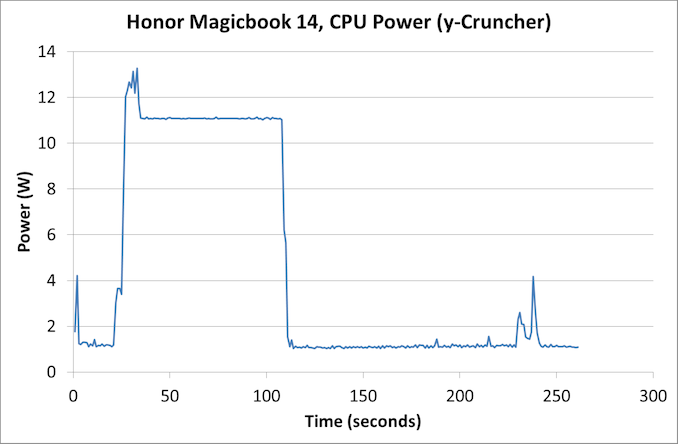
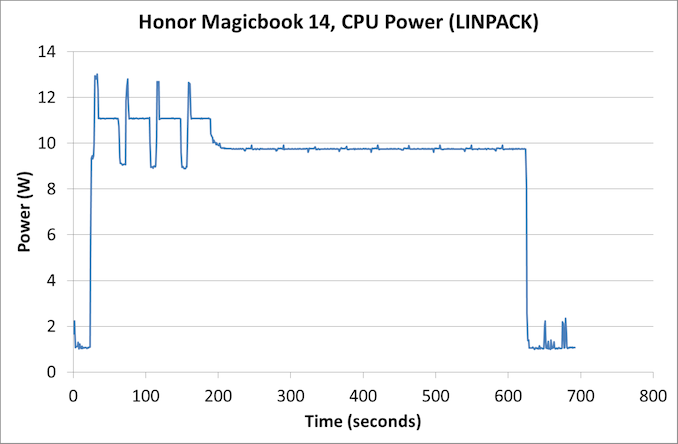
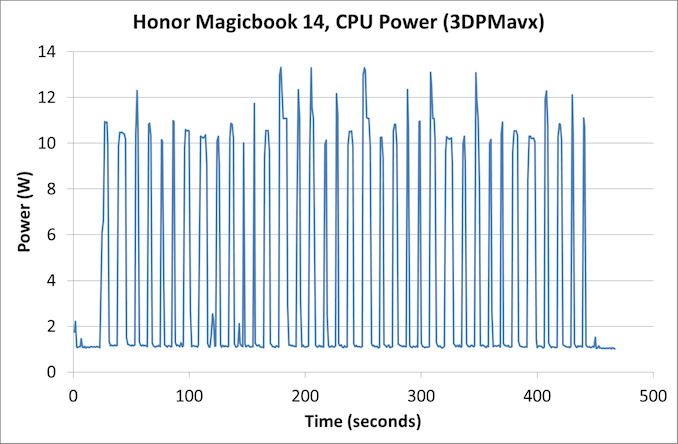
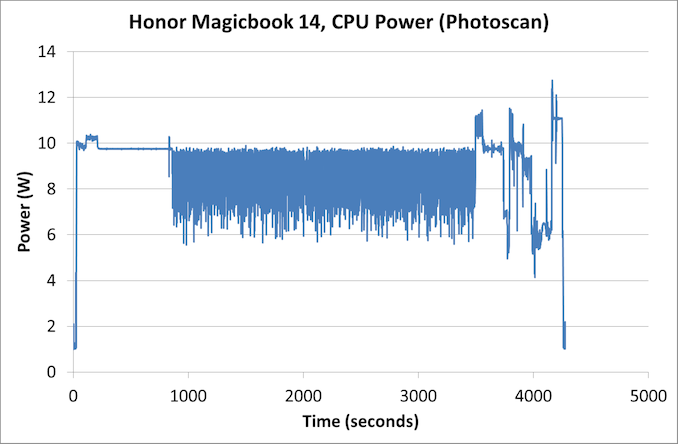

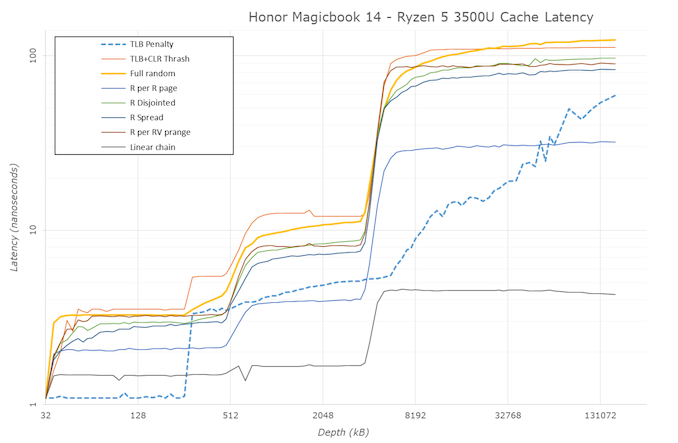








88 Comments
View All Comments
sonny73n - Sunday, May 24, 2020 - link
These trailer trashes think they invented everything. They ignore history and claim it’s all theirs as soon as a company in their country put it on a product. They don’t care the facts that many inventors working in their country are nationals that’s not the same as theirs. They claim it all whether it was stolen, robbed, bought, scammed... from others. They’re the exceptionals who has successfully fooled themselves.Xajel - Sunday, May 17, 2020 - link
This with Renoir, 4700U or 4800U (or both as options) will be the ultimate one to look for. Especially if they could add upgradable RAM to it (like 8GB or 16GB embedded and a single SODIMM).deil - Monday, May 18, 2020 - link
this is bad config. ssd is very close to heat source, and will get hot without use. it will shorten the lifespan a lot.Spunjji - Monday, May 18, 2020 - link
Not really. The flash on SSDs suffers more from cold than it does from heat, and it's extremely unlikely that a device like this will be put to such a use that the SSD controller would begin to throttle.Findecanor - Tuesday, May 19, 2020 - link
I would like to know if the type of charging this laptop uses is compatible with the USB Power Delivery standard, and what capacity it uses then.It is 2020, and today there is no way that I am going to buy any device that does not follow the standard. I don't want to carry five different chargers on the road.
dickeywang - Tuesday, May 19, 2020 - link
It comes with AMD graphics, which means better support in Linux. :)quadibloc - Thursday, May 28, 2020 - link
Taking Michael Kovrig and Michael Spavor hostage is dishonorable.sonny73n - Wednesday, August 12, 2020 - link
“The keyboard is an attempt to copy Apple’s chiclet design.”Even Anandtech believed the lie when it repeated enough of times.
Sorry to burst your bubbles. The chiclet keyboard was designed by Sony on the Vaios. Check products release dates on Google, you’ll be surprised how much Apple stole from others, not the other way around. Keep gobbling that BS from MSM.